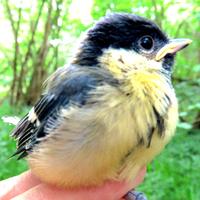
Wytham Tit Study
@WythamTits
Updates from the Edward Grey Institute's long-term population studies of tits based at Wytham Woods near Oxford
ID:2421094333
http://www.WythamTits.com 31-03-2014 21:27:33
1,3K Tweets
3,2K Followers
355 Following



Delighted to have contributed data to this new meta-analysis of genetic variance in fitness in wild populations led by Dr. Timothée Bonnet and including 18 other long-term popn studies. Fascinating differences between pops/spp - even for closely related (c.f. the tit pops included)


What an incredible visualisation tool the new Bird Migration Atlas from EURING is! Here's map of all European Great Tits, showing extent of movement along S edge of Baltic & isolation of UK as well as zoomed in maps for Wytham Tit Study Dept. of Animal Ecology
migrationatlas.org


600th ringed chick of the season for me this morning Wytham Woods Wytham Tit Study - with better weather than last year leading to higher brood success, it’s been a busy season!



The State of the World’s Birds - a thread based on our new paper in Annual Reviews annualreviews.org/doi/abs/10.114… 1/9


Wow! What a day... Quite a lot of coverage of our 75th anniversary & long-term response to climate change with coverage on BBC R4 BBC Radio 4 Today Breakfast BBC Breakfast Inside Science, 8 separate Radio interviews & segment for ITN News at Ten. E.g. 2h44 bbc.co.uk/sounds/play/m0…

#climatechange is shifting the seasons. & when you have to feed your chicks 10,000 caterpillars in just 2 weeks, timing your egg-laying perfectly is pretty important 🐦 🐛 🌳
Wytham Woods University of Oxford bbc.co.uk/news/science-e…

Wonderful to hear the work on Wytham Woods Tit Study being featured on BBC Radio 4 Today this morning. Alarming that spring is on average three weeks earlier than the 40s due to climate change. We are so proud to have such an incredible scientific resource on our doorsteps.

Some very feathery blue tits nests in the woods this year. Can you spot the bird? (Photo: Anett Kiss )










